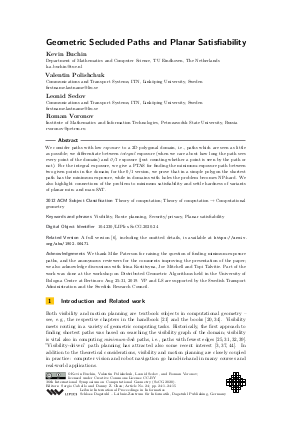LIPIcs.SoCG.2020.24.pdf
- Filesize: 0.85 MB
- 15 pages

 Creative Commons Attribution 3.0 Unported license
Creative Commons Attribution 3.0 Unported license










































Feedback for Dagstuhl Publishing